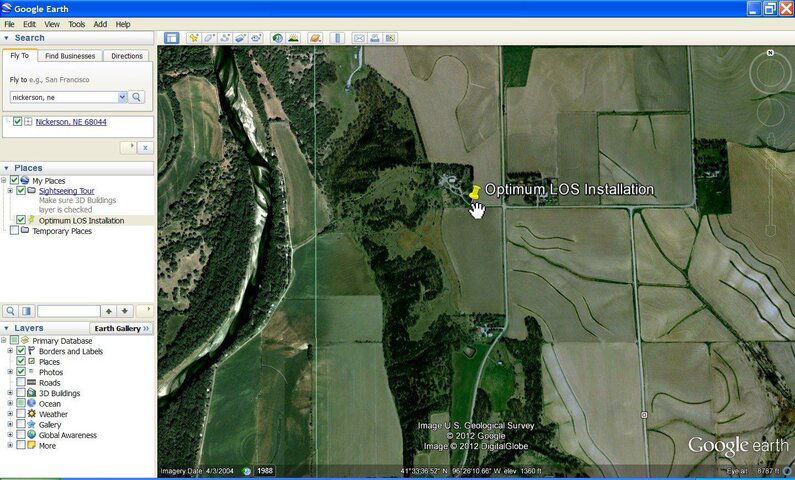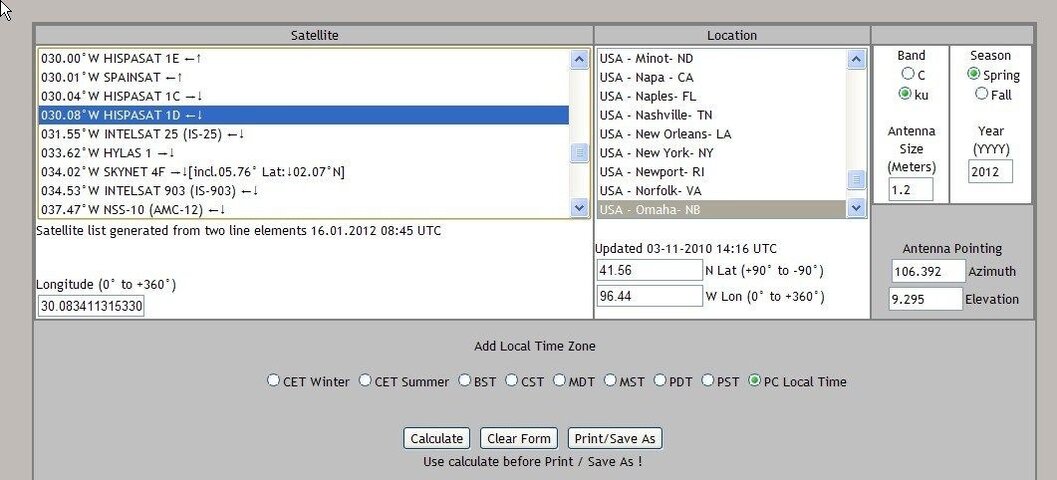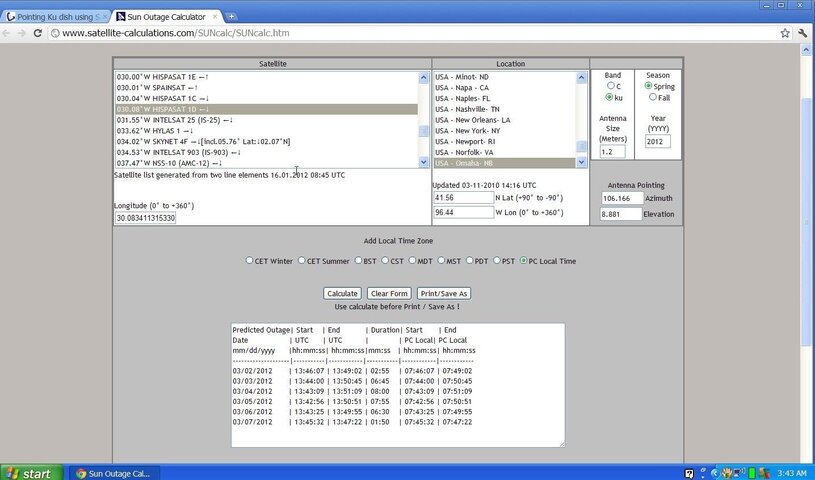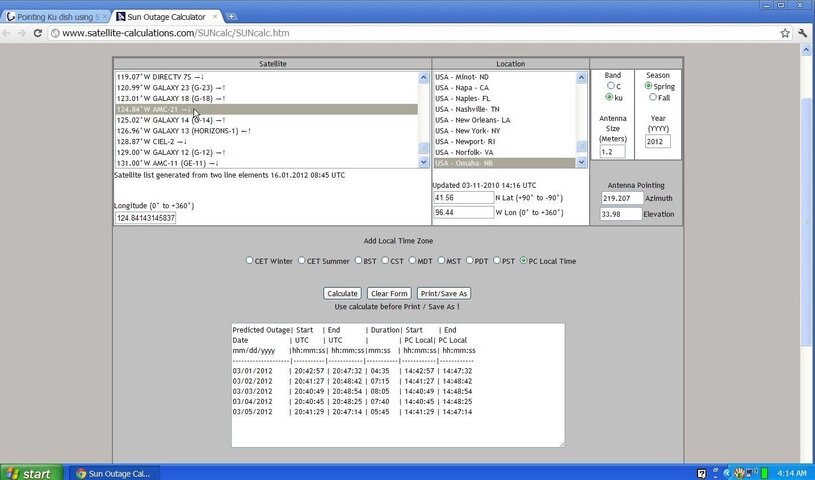I'll perform a little experiment so you can follow along if you like. First thing you need to do is utilize Google Earth and locate your property. By moving the mouse or cursor over the landscape, you find the precise latitude and longitude (and elevation) of your proposed dish installation. From the image below, I find that my coordinates are 41°33'36.52"N / 96°26'10.66"W.
We need to convert these coordinates to decimal degrees from their degrees/minutes/seconds format so that it can be entered into the solar outage calculator. Divide the minutes by 60 and the seconds by 3600 and add to the degrees. This gives 41.56°N / 96.44°W

We need to convert these coordinates to decimal degrees from their degrees/minutes/seconds format so that it can be entered into the solar outage calculator. Divide the minutes by 60 and the seconds by 3600 and add to the degrees. This gives 41.56°N / 96.44°W






